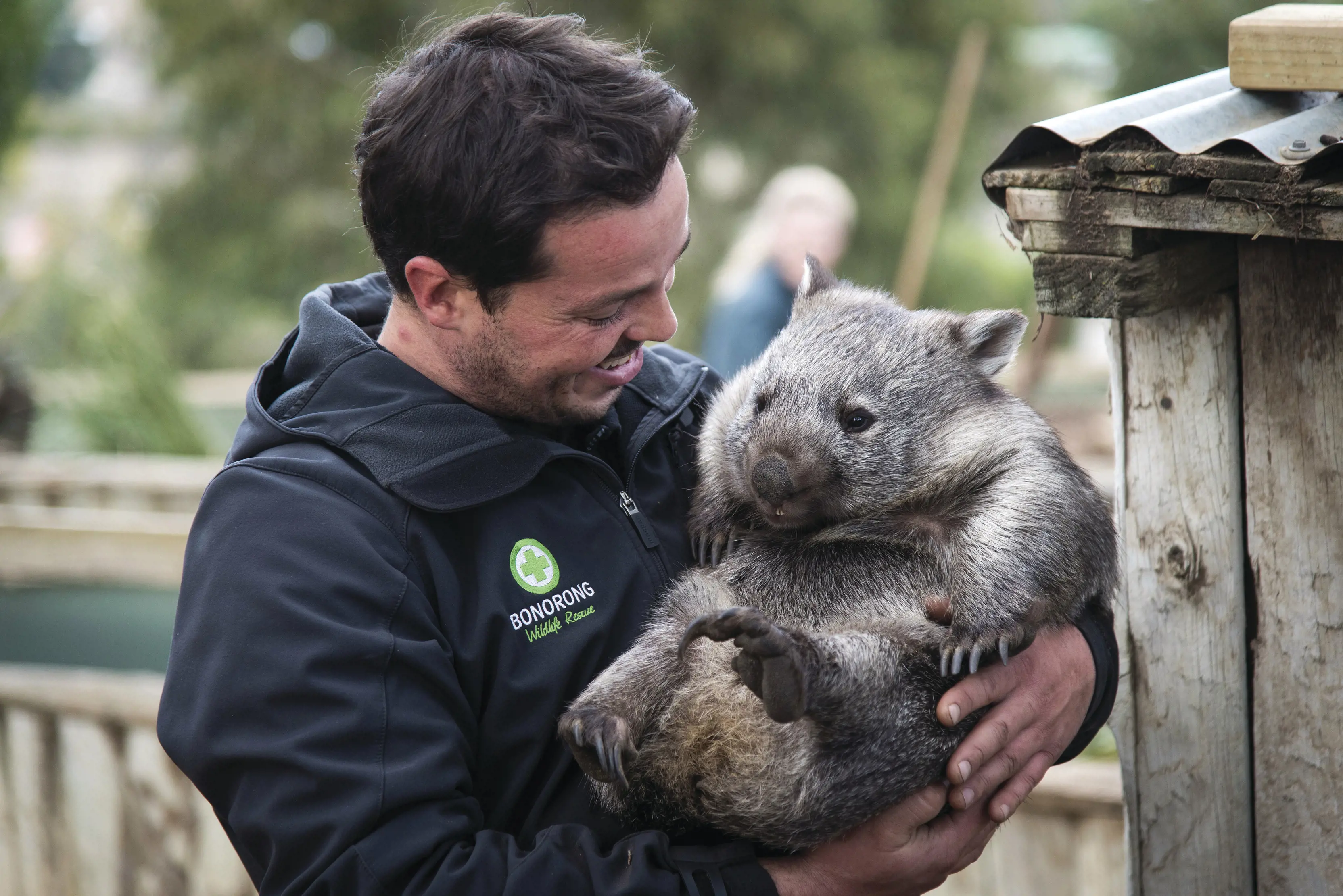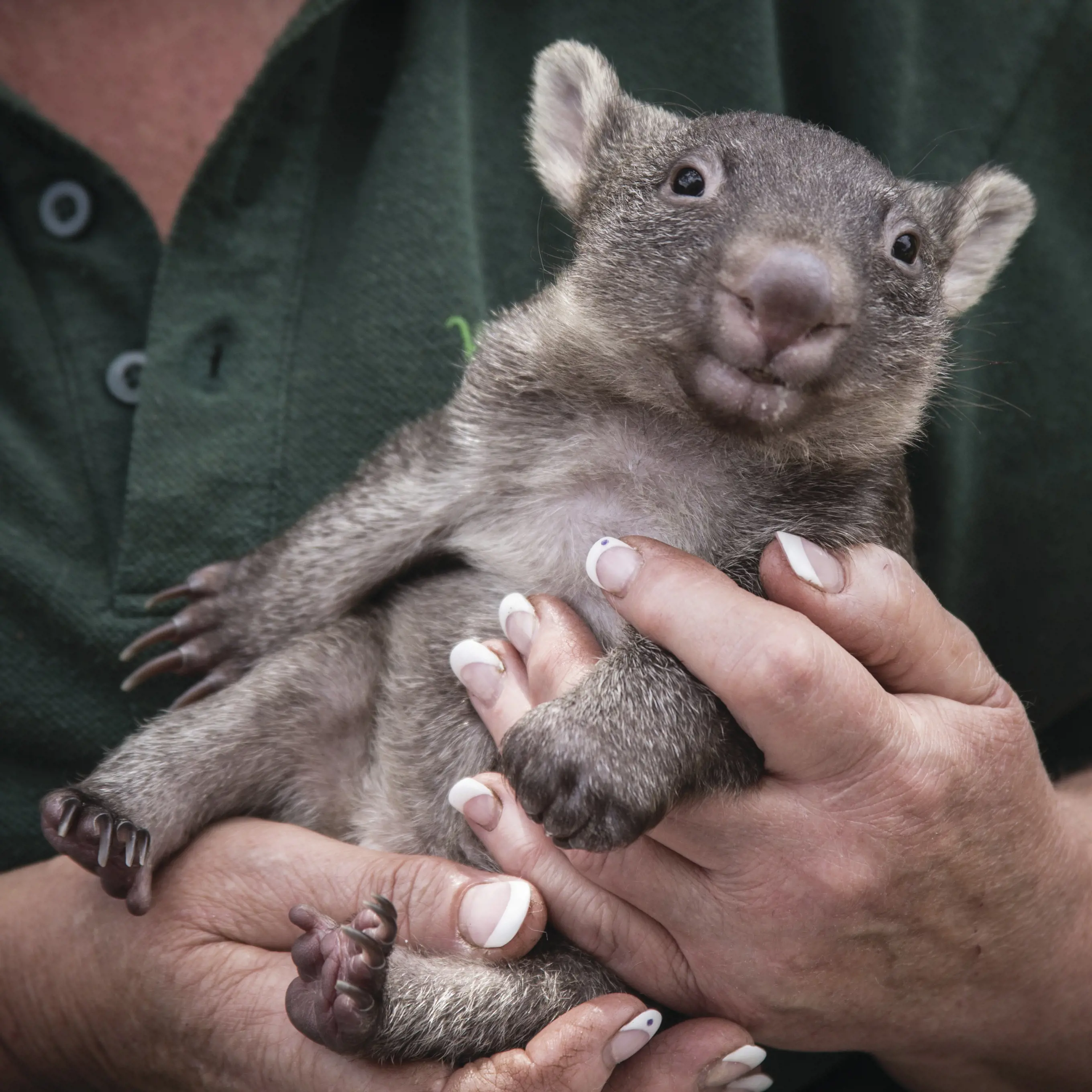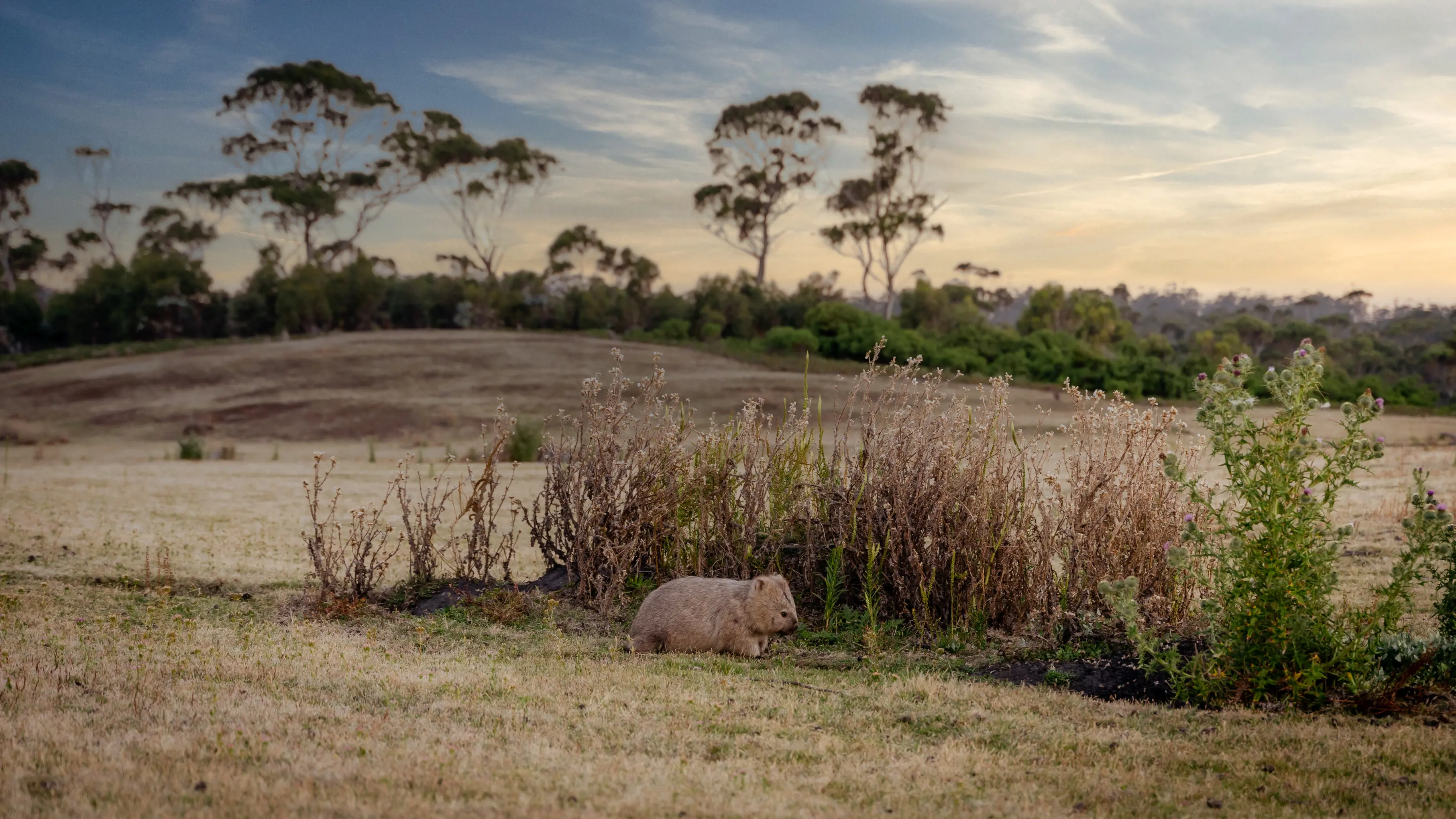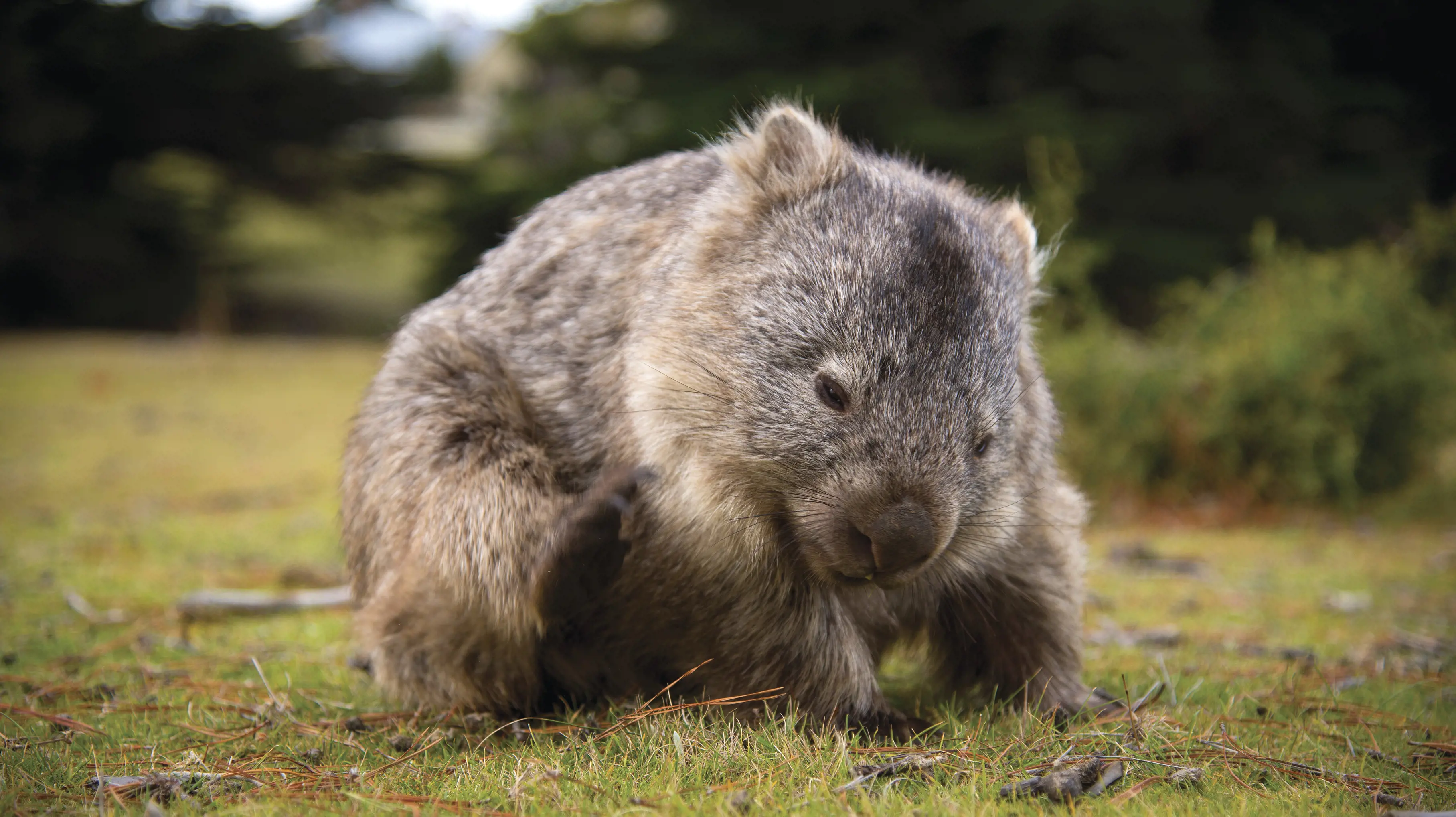
Spend any time in Tasmania’s national parks and you’ll almost certainly get to meet the cute and curious neighbours.
The world’s largest burrowing herbivores, wombats are unmistakable in appearance, though when they were first seen by European settlers, they were met with confusion.
In 1797, a wombat captured on Tasmania’s Bass Strait islands was presented to the New South Wales governor, John Hunter. When the animal died weeks later, it was preserved in a barrel and shipped to England for examination. A taxidermist studied the animal and determined that it surely sat upright – and for years the wombat was displayed in an English museum sitting just like that.
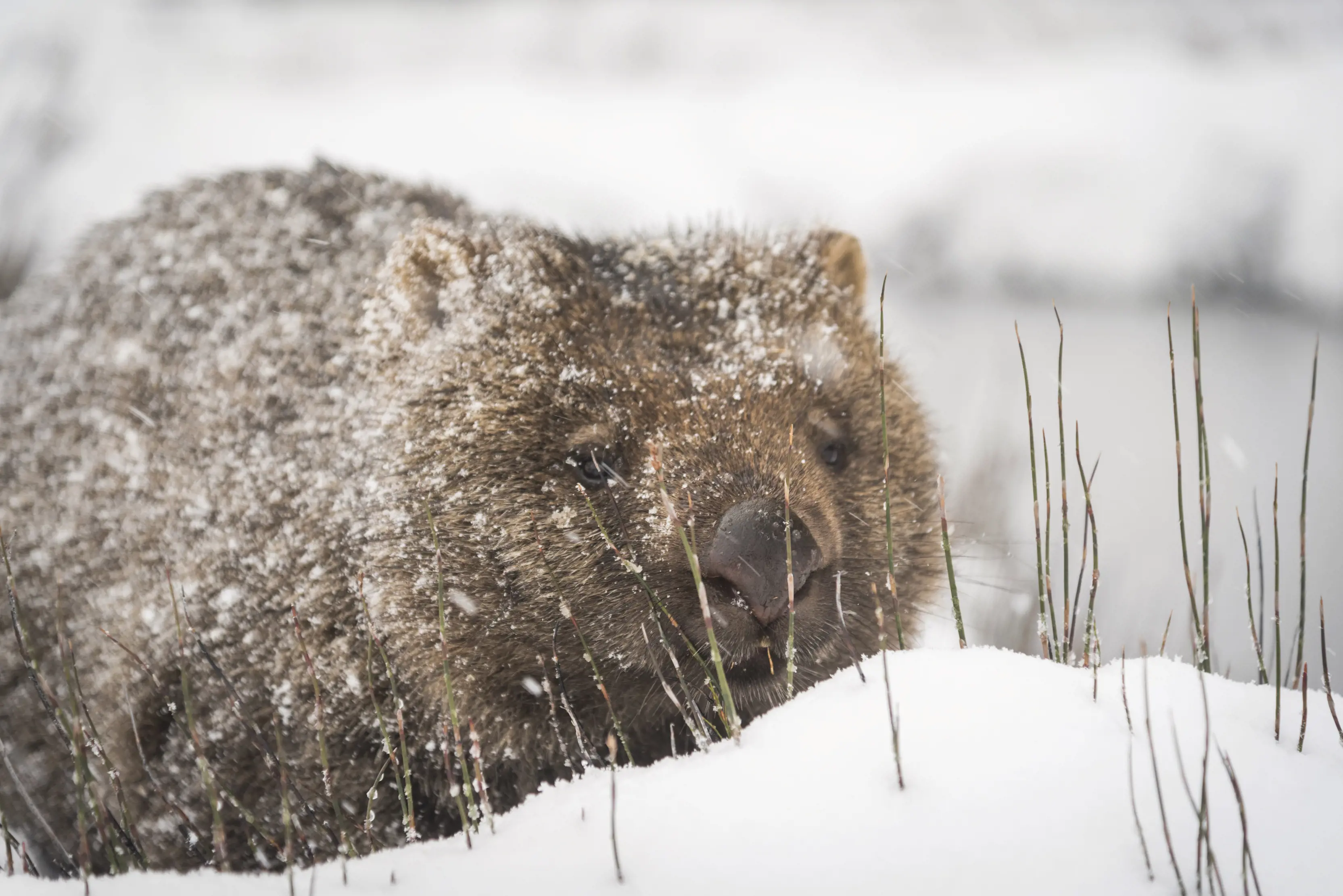
Fluffy bricks with teeth
So much more is known about wombats today, but their appearance remains intriguing.
“Fluffy bricks with teeth… how can you not like fluffy bricks with teeth and a backside as hard as a table?” says Greg Irons, the director of Bonorong Wildlife Sanctuary, a wildlife centre on the outskirts of Hobart that operates the state’s largest wildlife rescue service.
Part of the reason for that early mistake was that very backside. A wombat’s bum comprises four fused plates covered in cartilage, fat, thick skin and fur, and it’s the animal’s greatest weapon against predators. Wombats enter their burrows head-first, using their impenetrable backsides as a shield against other animals or threats.
“If something crawls above them while they’re in a burrow, their defensive response is to stand up,” says Scott Carver, a senior lecturer in wildlife ecology at the University of Tasmania. “And because they’ve got very strong, muscular legs, they can exert quite a lot of pressure. There’s been the odd case where that’s killed potential predators.”

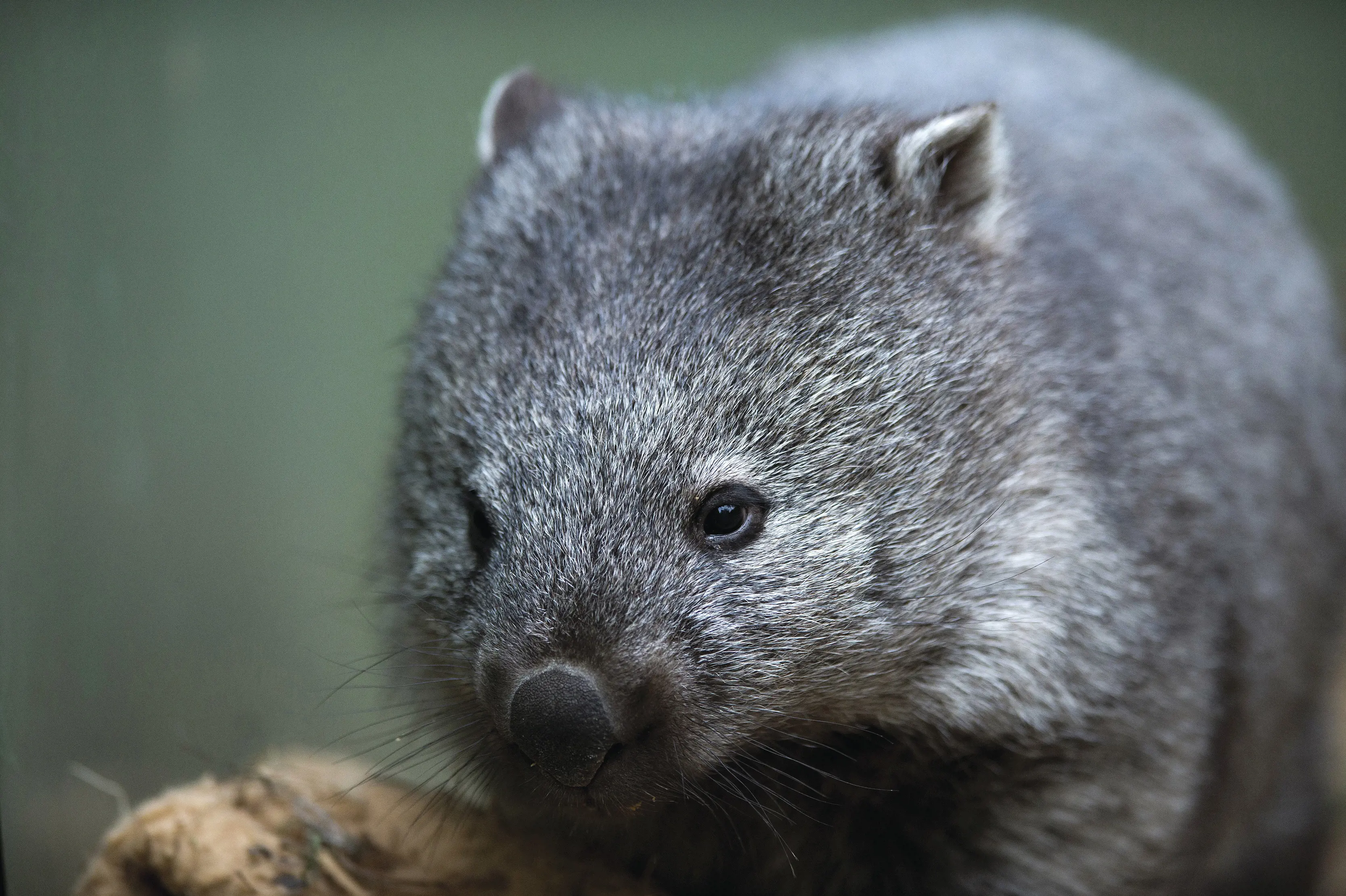
Olympic speed and geometric poo
A wombat’s other escape ploy is even more surprising – speed. These marsupials might look lumbering and lethargic, but they have an Olympic turn of pace, with an ability – even if rarely used – to run at up to 40kmh. They can maintain this speed for a very short time, but it means they could potentially run 100m in nine seconds – more than half a second faster than Usain Bolt’s world record.
Wombats, which have rootless teeth that never stop growing, are also great designers – of their burrows and their faeces. Wombat scat is uniquely cube-shaped (a painful thought, granted). Often piled up like a cairn, it’s one of the distinctive sights of the Tasmanian bush, commonly seen along walking trails. It’s thought that the poo’s shape is designed to prevent it from rolling away – there’s no scattering this scat – helping the animal to securely mark its territory.
“You’ll always know when a wombat’s been out,” Irons says. “If they’re out doing a territorial run and claiming a new area, they might drop up to 150 scats in just one night.
“At the very end of the digestive system there are some muscles that work to shape the scat just before it’s released. We’ve had a look – it’s not a square hole. I can guarantee that.”
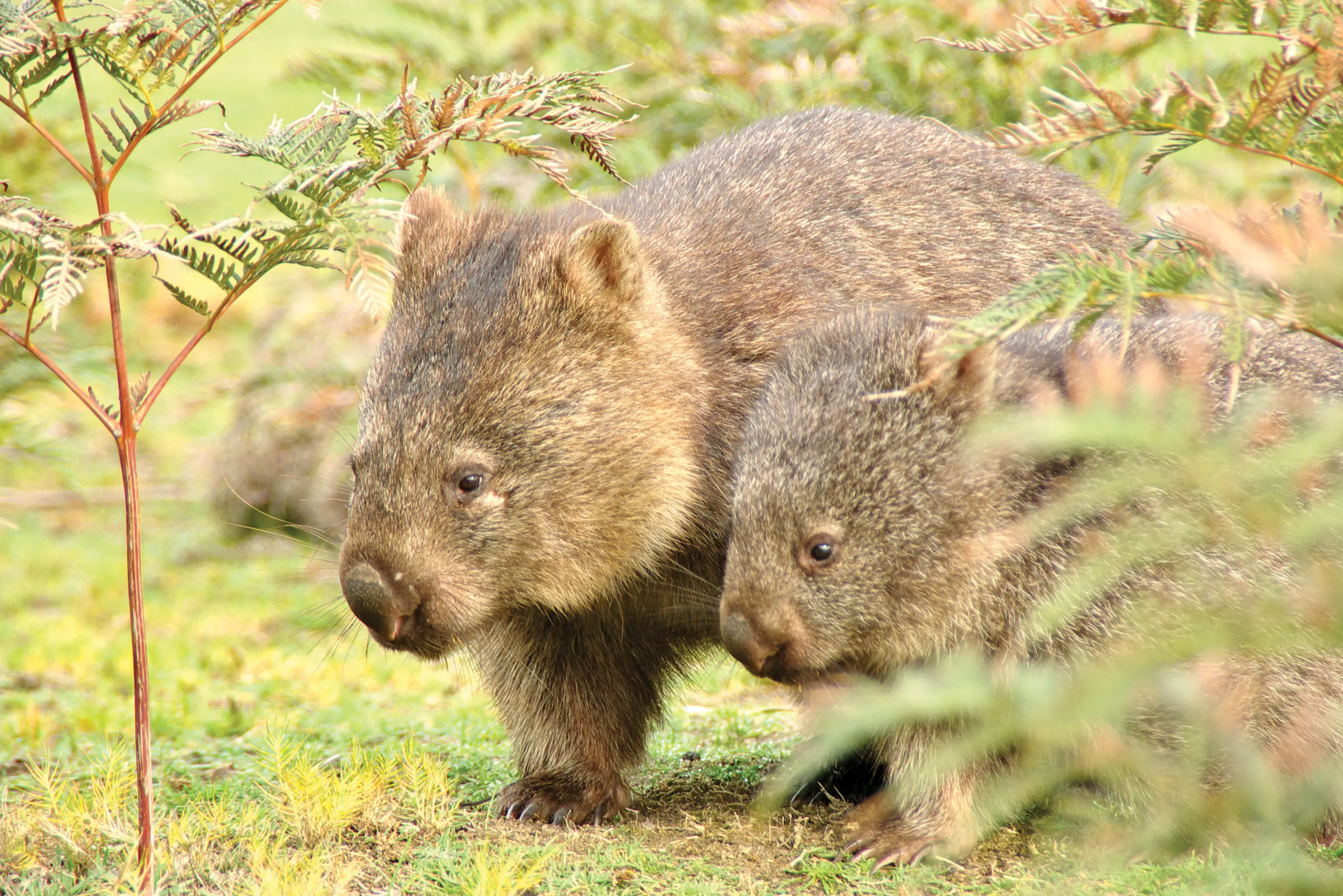
Keep wombats wild
The chances to see wombats in Tasmania are plentiful. A day on Maria Island can reveal dozens of wombats, which are collectively known as a wisdom, while they’re also found in large numbers around Cradle Mountain and on Flinders Island.
Incidentally, the Tasmanian wombat is a slightly different sub-species of the common wombat found on the Australian mainland, and there’s a Flinders Island sub-species, too, which was also introduced to Maria Island.
Remember that they are wild animals, so they shouldn’t be approached or fed. Consider taking the Maria Island pledge, to keep the wildlife wild.
The best chance of a personal encounter with a wombat is to visit one of Tasmania’s wildlife sanctuaries, such as Bonorong, where rescued wombats are raised to be released back into the wild.
“Admire them from a distance in the wild,” Irons says, “because we can actually change their day-to-day behaviour and affect the ecology of an entire area by having too many people descend and try to get too close. They then stop using that area, which changes how an area grows or how animals interact with it.
“At a sanctuary, you get to have a closer interaction with the animal and get more information about how they live. When you hand-raise them, you see that they all have very different personalities, but all of them love a bum scratch and they’re very affectionate.
It’s like having a constant two-year-old… with teeth.
Greg Irons, Bonorong Wildlife Sanctuary
Where to see wombats
